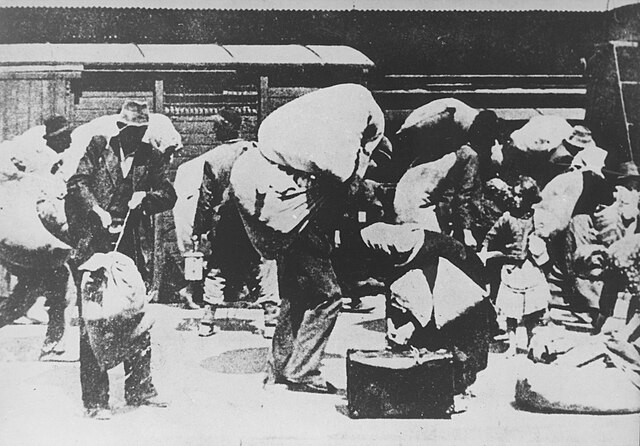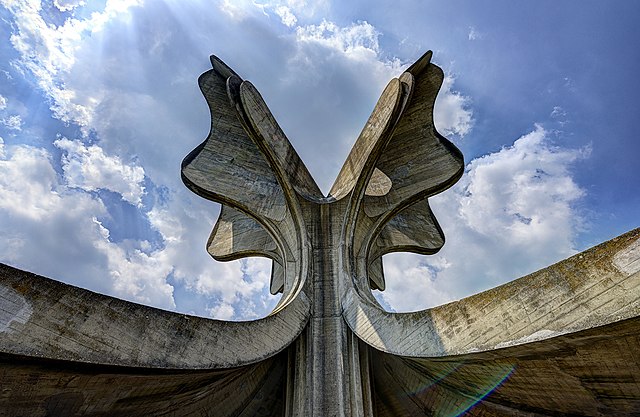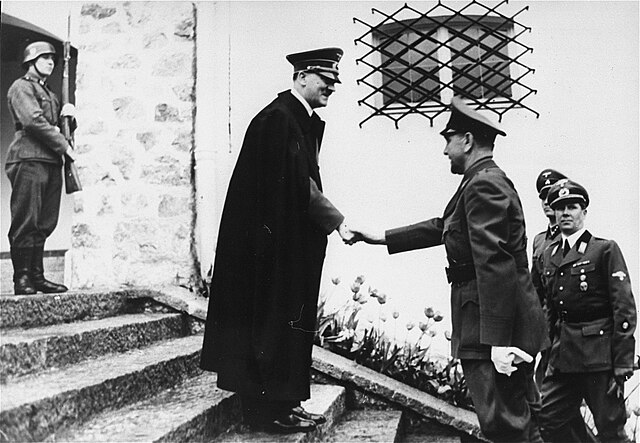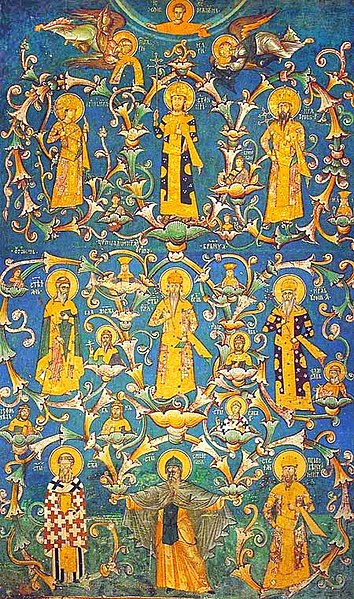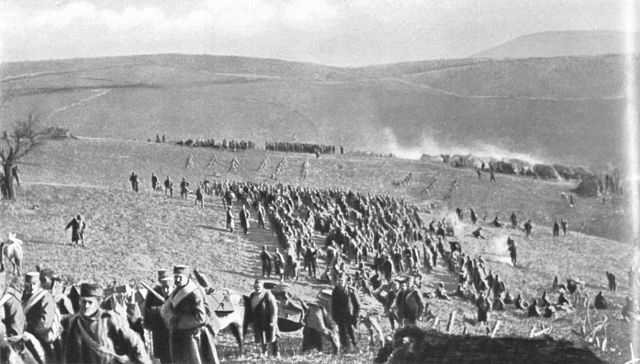Genocide of Serbs in the Independent State of Croatia
The Genocide of Serbs in the Independent State of Croatia was the systematic persecution of Serbs committed during World War II by the fascist Ustaše regime in the Nazi German puppet state known as the Independent State of Croatia between 1941 and 1945. It was carried out through executions in death camps, as well as through mass murder, ethnic cleansing, deportations, forced conversions, and war rape. This genocide was simultaneously carried out with the Holocaust in the NDH as well as the genocide of Roma, by combining Nazi racial policies with the ultimate goal of creating an ethnically pure Greater Croatia.
Image: Serbs expelled from Croatia, July 1941
Image: Jasenovac HDR D
Image: Adolf Hitler meets Ante Pavelić.1941
Image: Ustasa guard, Jasenovac
The Serbs are a South Slavic ethnic group native to Southeastern Europe who share a common Serbian ancestry, culture, history, and language. They primarily live in Serbia, Kosovo, Bosnia and Herzegovina, Croatia, Montenegro as well as in North Macedonia, Slovenia, Germany and Austria. They also constitute a significant diaspora with several communities across Europe, the Americas and Oceania.
Nemanjić dynasty members, the most important dynasty of Serbia in the Middle Ages
Migration of the Serbs (1896), a painting by Paja Jovanović, depicting the Great Serb Migrations led by Patriarch Arsenije III Crnojević, 17th century.
Battle of Cer marked the first Allied victory over the Central Powers in the First World War.
Stone Flower, a monument dedicated to the victims of Jasenovac death camp, which was part of the Genocide of Serbs committed by Ustaše

